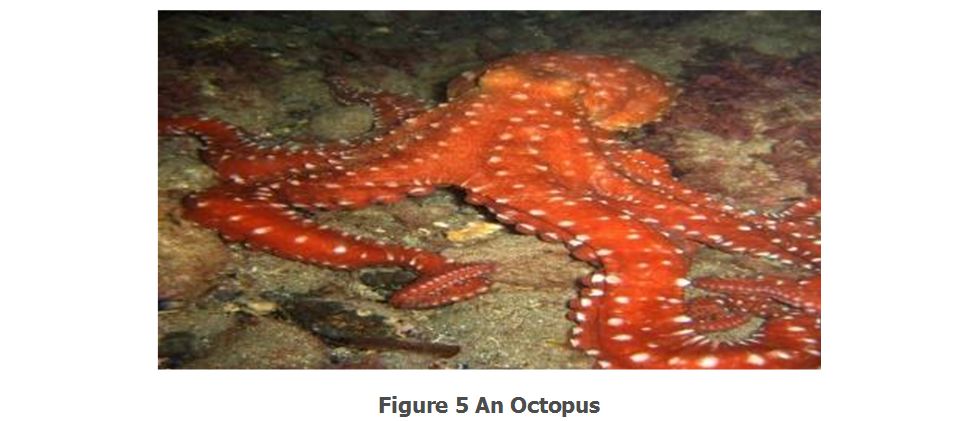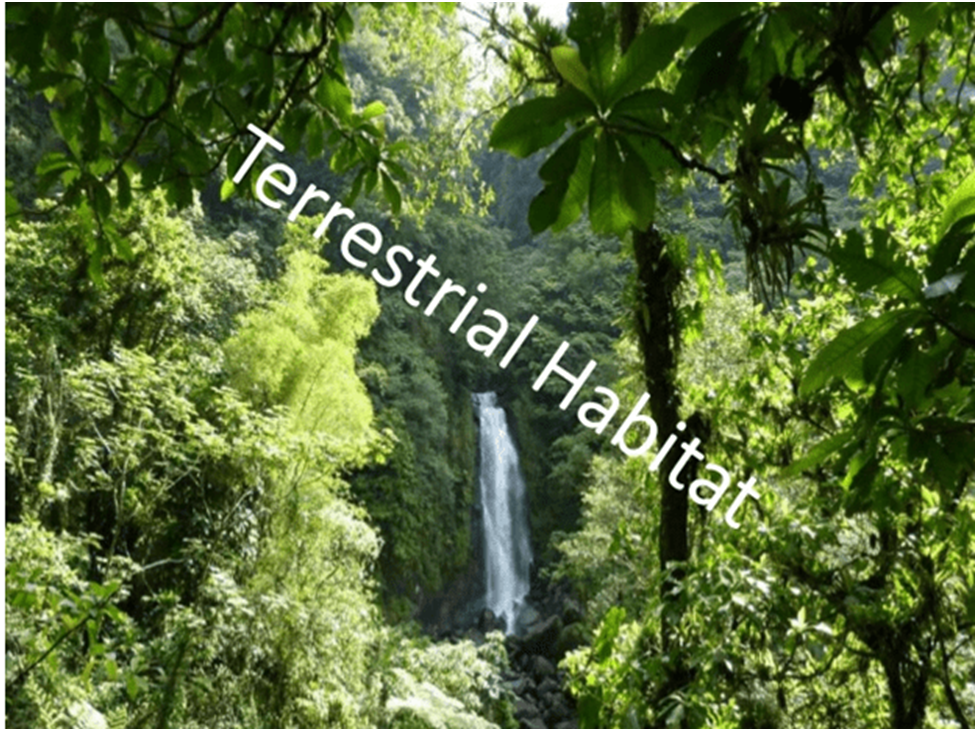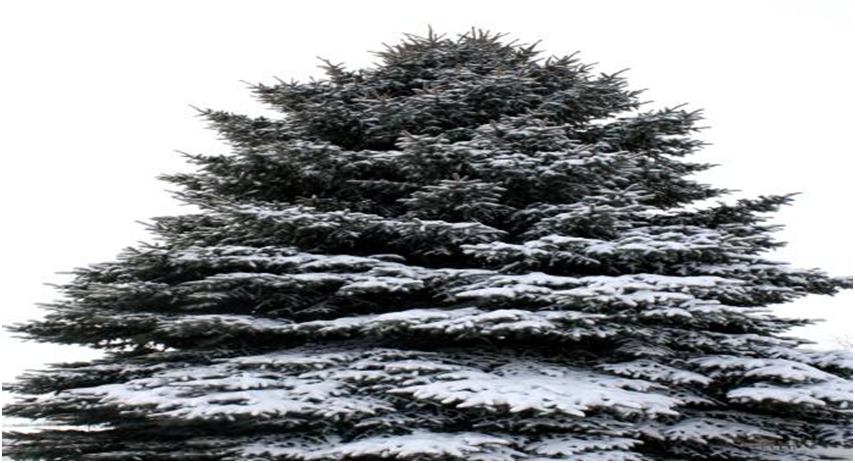- Books Name
- CBSE Class 6 Science Book
- Publication
- Param Publication
- Course
- CBSE Class 6
- Subject
- Science
• Adaptation in different habitats :
A. Terrestrial Habitats :
(i) Deserts : Desert is a water depleted area so basically plants and animals are adapted for little or less of water. Deserts are areas which receive very little rainfall. Sahara and Kalahari are two examples of deserts. Deserts are very hot and dry. Camels, cactus, date palm tree, rattle snake, are example of organisms found in deserts.
Adaptation In Desert Animals and Plants :
• Desert animals include camel, rats and snakes.
• To stay away from the intense heat during the day, rats and snakes stay in burrows deep in the sand. They come out only during the night, when it is cooler.
• Camel’s nostrils have long hairs to prevent the entry of sand and dust. They have no sweat glands in their skin.
• Adaptation in desert plants lose very less little water through transpiration.
• Desert plants either have no leaves or they have small or spine shaped leaves to reduce transpiration.
• Photosynthesis is usually carried out by stems.
• The stem is covered with a thick waxy layer which helps it to retain water.
• They have deep roots for absorbing water.
• Stomata are few, sunken in pits or covered with fine hairs.
(ii) Mountain regions : They are normally very cold and windy. In some places, snowfall may take place during winter.
• The leaves of some trees are needle - like so that snow and rain water can slide off easily.
• Animals have thick skin or fur to protect them from cold.
• Yaks have long hair to keep them warm.
• Snow leopard has thick fur on its body including feet and toes. This protects its feet from the cold when it walks on the snow.
• The mountain goat has strong hooves for running up the rocky slopes of the mountains.
(iii) Grasslands
• Lion lives in grassland.
• Its light brown colour helps it to hide in dry grasslands when it hunts for prey.
• The eyes in front of the face allow it to have a correct idea about the location of its prey.
• A deer has strong teeth for chewing hard plant stems.
• It has long ears to hear the movement of the predators.
• The eyes on the side of its head allow it look in all directions for danger.
• The speed of the deer helps them to run away from the predators.
B. Aquatic Habitats :
• Aquatic Adaptations
The animals which live in water are known as aquatic animals. Common aquatic animals -are fish, whale, crab, octopus, lobster, etc.
• They have the following adaptations:
1. They have streamlined body without a neck.
2. They have powerful tail and fins for swim.ming.
3. They have gills for respiration.
4. Some fishes have air bladder to make floating easier.
5. They have special body covering like cuticle, scales, shells and waxy coating which prevent rotting and decay.
- Books Name
- Class 6 Science Book
- Publication
- PathSet Publications
- Course
- CBSE Class 6
- Subject
- Science
A Journey Through Different Habitats

Aquatic habitat
When organisms live in water, this place of living is known as aquatic habitat.
- Ponds, lakes, rivers, oceans, etc., are examples of aquatic habitats.
- Water is a medium in aquatic habitats.

Marine Habitat
- Marine Habitat comprises of oceans and seas, and both have saltwater.
- They are home to a wide variety of creatures like the most part of fish population is found here.
- Marine creatures are found in Estuaries – where rivers and oceans meet and the water is salty.
- Marine Mammals like whales migrate to long distances in order to cope up with the temperature changes.
Oceans
- Most organisms have streamlined bodies and gills
- Octopuses do not have streamlined bodies so they stay deep in ocean, but when moving they make a streamline motion.
- Whales have blowholes instead of gills This enables them to breathe easily when they swim near the surface of water.

Freshwater Habitat:
- Rivers, lakes, ponds etc comprise the freshwater habitats.
- Three percent of world’s water is accounted as freshwater but still a wide variety of species are found here.
- Snails, worms, mollusks etc are found in this habitat
Ponds and Lakes:
- Plants: Water plants can be completely submerged in water (like Hydrilla) or floating on the surface of water(like Water Lily, Lotus, Water Hyacinth). Roots are much reduced in size, since their main function is to hold the plant in place. Stems of aquatic plants are long, hollow and light so that these can bend in along with water movement. e.g Water Lily. The stems grow up to surface of water, while the leaves and flowers float on surface of water.
- Totally submerged plants have narrow and ribbon like leaves (e.g tape grass). These can bend in flowing water.
- Stems have air spaces to enable the plant to float. Floating plants are large and flat. They have waxy upper surfaces that makes them waterproof. They have stomata on the upper surfaces which are exposed to air.
- Frogs are adapted to live both on land and water, they have strong back and legs and webbed feet which allows them to swim in water.
Coastal Habitat:
- Habitats where the land meets the sea.
- Beaches, special type of trees called mangroves are found in this habitat
- Coastal plants like seaweed attach to the rocks firmly so that they are not swayed by the waves,
Acclimatisation: Due to certain changes in the surroundings, organisms adapt through them by making small changes in the body over short periods of time.
For e.g: The changes which take place in the body when we travel from plains to mountains. The adjustment which the body makes is called Acclimatisation
Terrestrial Habitat:
a) Deserts:
The following adaptations of various organisms are enlisted below:
- Snakes and rats dig burrows to escape intense heat as they dont have long legs such as a camel. These animals come out only during the night, when it is cooler
- In desert plants leaves are reduced to spines and lose little water through transpiration
- The stems of desert plants have a waxy coating on them and in most of them photosynthesis is carried out by the stem
- Their roots go deep into the soil so as to absorb water.
- The leaves in desert plants are absent to prevent loss of water due to transpiration.
- Some of the animals are camels, kangaroo rats etc

When organisms live on land, this place of living is known as terrestrial habitat.
- Forests, deserts, orchards, tea gardens and mountains are examples of terrestrial habitat.
- Air is the medium in terrestrial habitats.
Mountain

b) Mountain Regions:
- The trees are cone shaped with slope like branches, also needle-like leaves are present so that rain and snow slide off them easily.
- Animals have thick fur which provides protection from cold. e.g. Snow Leopard
- Presence of strong hooves help the mountain goat to run on the rocky slopes.
- Eg are Pines, mountain goats, yaks, sheep etc. Yaks have long hair to keep them warm.
- The mountain is a special terrestrial habitat where temperature is very low and most of the areas are covered with snow.
- The plants like grasses, mosses and lichens and animals like snow bear, fox, water fowl, musk deer and wolf are found commonly in this habitat

A tree found in mountain region
c) Grasslands:
- The light brown colour of the lion helps it to hide in dry grasslands and the presence of long claws help to capture the prey.
- Deer has strong teeth to eat plant stems also its long ears help to listen to predator movement. They have eyes on its sides of the head which help them to look in all directions to lookout for danger.
- Some of the animals living in these habitats are elephants, giraffes, lions.
d) Rainforest:
- This habitat receives a lot of rain and hence its rich in animal life.
- Mammals, Amphibians, Reptiles all sorts of animals are found here.
- The climate is hot and humid and animals have to learn to adapt to survive.
e) Polar Habitat:
- These habitats are very cold and windy.
- The animals are mostly carnivores and have thick fur to survive in cold.
- Some blend in ice and some may hibernate in the coldest months.
- Examples of animals are polar bears, reindeers, penguins etc.

 Param Publication
Param Publication
 PathSet Publications
PathSet Publications
